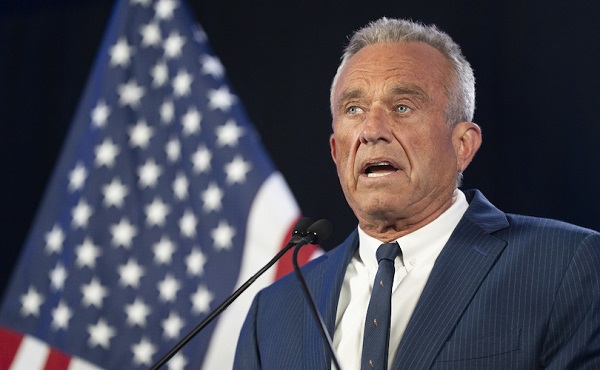MacDonald Laurier Institute
Peterson’s case demonstrates where professional regulators have gone astray

From the Macdonald Laurier Institute
By Stéphane Sérafin
Professional regulators are losing sight of the purpose their disciplinary authority is supposed to serve, to protect society by preserving professional competence.
Members of restricted professions – doctors, lawyers, accountants and psychologists, among others – are subject to the disciplinary authority of their respective professional regulators. This arrangement is intended to ensure a minimum level of professional competence and to protect those relying on these professional services.
This has obvious advantages over purely market mechanisms, at least in theory, owing to the fact that professional regulators can set standards for members that apply before a member has engaged in serious professional misconduct. However, professional regulators have attracted significant controversy in Canada over the past few years as attempts to police members’ off-duty speech and conduct have become a recurring news item.
The problem is that professional regulators are losing sight of the purpose their disciplinary authority is supposed to serve – to protect society by preserving professional competence – and are policing members values for the sake of perceived reputational interests.
While it is tempting to conclude that the difficulties in these controversial cases arise from straightforward regulatory overreach, the problem is more complex. The fact is that regulators have always had the ability to police off-duty conduct, and for good reason, since such conduct may bear directly upon member competence. It is not that regulators are suddenly policing off-duty conduct which used to fall entirely outside their purview, but that the kinds of expression they are trying to censor are no longer focused on protecting society from an incompetent professional but on protecting themselves and their colleagues from association with political views which they find distasteful.
Professional regulators should reverse course, return to their mandates, and focus on ensuring professional competence, not political alignment, among their members.
Consider the best-known Canadian controversy concerning former University of Toronto professor-turned-social-media-influencer Jordan Peterson. As a member of the College of Psychologists of Ontario, Peterson was ordered to undergo social media training following complaints that his social media posts were discriminatory and unprofessional. The College felt that it could make such an order against Peterson without subjecting him to a full disciplinary procedure. It also felt that it could do so solely on the basis of complaints that did not originate with his clients, but arose out of positions that he had publicly staked out on controversial political and cultural issues.
When Peterson challenged the decision through a judicial process, the Ontario Divisional Court found that the College’s decision was reasonable. The Court was of the view that professional regulators had always held the requisite jurisdiction to police member expression, even when that expression did not arise in the context of a member’s strict professional activities. This included the capacity to police expression considered “discriminatory”. Moreover, it was thought to be enough that the expression might adversely impact the reputation of the psychology profession.
The principles invoked by the Divisional Court in this case are difficult to contest in the abstract. To recognize the authority of a professional regulator over a given profession, rather than relying on market mechanisms to ensure basic competence, means that the professional regulator must take a broad view of the kind of conduct that could fall within its ambit.
It would be difficult to claim that the off-duty conduct of a member is entirely without interest for professional regulators, since such conduct can be relevant to determining whether a particular person is fit to remain a member in good standing. An individual who commits a sexual assault outside of work hours, for example, is probably not fit to act as a clinical psychologist, just as someone who embezzles funds in a context divorced from his or her work should probably not be allowed to operate a trust account as a lawyer. No doubt, certain forms of expression that are not directly connected to the member’s professional activities – defaming others, threatening violence, or airing confidential information other than client information – raise similar concerns.
Criminal and civil court processes are not designed to address these concerns, since their purpose is to establish a criminal infringement of community norms and civil liability towards another person, respectively. Not all criminal acts or civil wrongs necessarily impugn a member’s professional competence, and conversely, there may be grounds to sanction a member where the threshold for criminal or civil liability has not been met.
But to say that professional regulators ought to have jurisdiction over the off-duty conduct of their members is one thing; to determine what type of off-duty conduct, specifically, properly attracts their disciplinary jurisdiction is another. The trouble with the Peterson case, as with many of the other recent Canadian controversies, is that the justification offered for the exercise of professional regulatory jurisdiction does not fit the paradigm offered by the examples just referenced, in which the off-duty conduct, including off-duty expression, can be taken to cast doubt on the member’s ability to carry out his or her profession. Instead, these cases present the regulation of off-duty expression by regulators in a manner analogous to the employment context, where the concern is not with the protection of the public interest, but in allowing employers to preserve their own reputation and to avoid vicarious liability for the acts of subordinates.
The view suggested by the Divisional Court in the Peterson case – that professional regulators are simply doing what they have always done – misses the widening focus of regulators beyond professional competence. This widening focus has been precipitated by at least two factors.
First, technological shifts have significantly altered the balance of power between professional regulators and individual members of the public. In an era of social media, an opinion that would have once been expressed to a small audience now finds itself exposed in some cases to an audience of millions. The possibility that someone, somewhere, will find offense, or decide to find offence, with the expression of opinions grows with the scope of the audience. Moreover, the nature of social media is such that any member of that audience can react, in real time, individually or in concert with others, to the opinion being expressed. This means that potentially every public utterance, whether reasonable or not, creates a reputational risk not just for the individual member, but also for the broader profession. Professional regulators are unsurprisingly concerned by this possibility, which affects their own vested interests.
Second, and perhaps more importantly still, broader cultural shifts have also significantly altered the kinds of expressive content that regulators are likely to treat as “unprofessional” or otherwise raising reputational concerns.
Consider another decision, Simone v. Law Society of Ontario, which was narrowly decided by the Law Society of Ontario Tribunal (the body charged with adjudicating complaints against Ontario lawyers and paralegals). In that case, Lisa Simone, an individual seeking membership in the Law Society of Ontario as a paralegal, was subject to “good character review” because of social media posts that she had made which were, among other things, critical of vaccine mandates, the Black Lives Matter organization, and “pride” events. While the Tribunal ultimately decided in favour of the candidate’s good character, and thus her admission as a paralegal, a majority did so apparently on the sole basis that the candidate had expressed remorse for the social media posts in question.
As with the Peterson case, the comments that landed Simone into trouble were associated with positions on the “right” of the political spectrum. They were also brought to the attention of the Law Society through complaints by members of the general public, and were used against her outside of a formal disciplinary proceeding. In other words, this was also not a classic case involving a disciplinary proceeding brought for off-duty conduct that undermined confidence in Simone’s ability to work as a paralegal. Rather, the concern was that the social media posts themselves reflected poorly upon the profession, not just because of their tone (though this was the formal argument made against Ms. Simone’s accreditation) but also, ostensibly, because of their content. This appears to be why the majority in that case repeatedly reaffirmed Ms. Simon’s obligation to comply with human rights laws, as though the mere expression of views critical of vaccine mandates, the Black Lives Matter organization, and “pride” events might infringe those obligations.
To say that professional regulators appear increasingly concerned with the reputational interest of their profession is, in this context, to say that professional regulators appear increasingly concerned with the appearance of complying with narrow cultural and political orthodoxies. These are “orthodoxies”, since they are views that are now largely taken for granted among much of the professional class, or at least among those individuals who are most likely to staff professional regulators and make decisions concerning member conduct.
Where a member of a restricted profession expresses personal viewpoints at odds with these admissible perspectives, the concern is not that the member lacks the requisite competence to exercise their role. Rather, the concern is that the mere expression of these views is “unprofessional”, in the sense that they are potentially damaging, or at least embarrassing, to the profession. That is, the expression of this views is “unprofessional”, owing to the fact that the member’s personal opinions are at odds with the values that the regulator thinks the profession should embrace.
That said, while the opinions that have run afoul of professional regulators have typically been associated with the “right” of the political spectrum – as in the Peterson and Simone cases – there have also been cases in which the authority of professional regulators has been invoked to punish those expressing views more typically associated with the “left”. In one particularly notable incident after the October 7 attacks on Israel by Hamas, students enrolled at the Faculty of Law at Toronto Metropolitan University (formerly Ryerson University) circulated a letter that purported to express solidarity with Palestinians, but also included language referencing a right of “resistance”. Many in the legal profession interpreted the letter as condoning the October 7 terrorist attacks. This prompted calls to deny the students articling positions (a requirement of lawyer licensing in Ontario) and potentially to deny them accreditation altogether.
This and similar cases that have arisen since October 7 may well suggest that the phenomenon that has until recently targeted mostly “right”-coded political opinions may now be weaponized by either side of the political spectrum.
What each of these cases undoubtedly serve to highlight, in any event, is a need to recover the importance of professional competence as the aim of regulators. Ensuring professional competence is the very reason for which professional regulation exists, and why determinations as to who can exercise these particular professions are not left solely to the market.
Canadians need professional regulators to return to their mandate: ensuring a minimum level of professional competence and protecting those relying on professional services. Regulators should not concern themselves with whether the opinions expressed by members are potentially embarrassing because they happen to fall outside the “values” that regulators believe professionals should embrace.
Stéphane Sérafin is an assistant professor in the French Common Law Program at the University of Ottawa.
Housing
Government, not greed, is behind Canada’s housing problem

By Anthony De Luca-Baratta for Inside Policy
When it comes to housing unaffordability in Canada, Prime Minister Mark Carney has correctly diagnosed the problem – but prescribed the wrong solution. The cost of new homes across the country increasingly exceeds the average family’s budget. But Carney’s proposal to establish a new federal entity, Build Canada Homes, to “get the government back in the business of homebuilding,” will make matters worse.
During the recent election campaign, the Liberal leader promised to make the federal government into an affordable housing developer by, among other proposals, offering low-cost financing to affordable-housing builders. This approach falsely implies that housing is what economists call a public good – something governments provide because the market cannot.
National defence is a perfect example of a public good: private contractors alone would be unable to withhold protection from those who failed to pay for their services, incentivizing many to welcome the security without paying a dime. In economics jargon, this is known as the “free-rider problem.” Defence contractors would quickly go bankrupt, and the nation would be left defenceless. For this reason, the government is the primary provider of national defence in all functioning states.
If housing suffered from the same market failure as national defence, the government’s approach would have some merit. But it does not, indicating that housing is not, in fact, a public good. The laws of supply and demand are thus the most efficient way of determining both the quantity and price of housing.
In a free housing market, when prices begin to rise, builders build more units to earn higher profits. Over time, competition among builders, homeowners, and landlords forces prices back down because individuals who overcharge lose customers to those who do not. Because overcharging is bad for business, the market provides an abundance of housing at prices negotiated among millions of buyers and sellers. The result is a natural supply of affordable housing – no special incentives needed.
Some in Canada might dismiss this logic as hopelessly naïve. According to these individuals, inflated prices come primarily from landlords and developers squeezing Canadians for more profit and greed is running rampant in the Canadian housing market.
The truth is that developers and landlords are responding rationally to bad economic policy, and homebuyers and renters are footing the bill. Municipalities across Canada limit building heights, set aesthetic standards, ban certain types of construction in designated areas, impose parking requirements, and legislate minimum lot sizes, among a host of other land-use regulations.
These rules make housing harder and more costly to build, constraining supply and radically inflating prices. The C.D. Howe Institute estimates that these regulations cost homebuyers an average of $230,000 in Vancouver, Abbotsford, Victoria, Kelowna, Calgary, Toronto, and Ottawa-Gatineau. In Vancouver, that figure is an eye-watering $1 million.
It is this economic reality, not an unwillingness to build affordable housing, that lies at the root of Canada’s housing crisis.
Housing Minister Gregor Robertson inadvertently admitted as much when he cautioned that there would be no quick solution to Canada’s housing crisis because “projects take years to approve and build.” The minister failed to acknowledge that these delays are due to cumbersome municipal regulations.
To solve Canada’s housing crisis, Carney must begin by recognizing that affordable housing in Canada is in short supply because local governments have made it impossible to build. The housing market could provide affordable housing on its own – no taxpayer-funded subsidies required – if only the government would reduce burdensome industry regulations. Just look at jurisdictions with virtually no land-use regulations, like Houston, Texas, where housing is abundant and affordable. Studies have consistently shown that wherever land-use regulations are low, so are home prices.
To be fair, the Liberal Party’s election platform did acknowledge the need to cut federal housing regulations. It also suggested that it wanted local governments to streamline development, though it was short on specifics. But since the election, there is no sign that the government is moving forward with any of these proposals.
The prime minister needs to tell local governments that their federal funds will dry up if they don’t start getting out of the way of housing development. He should also offer bonuses to cities that are especially quick to build new units. Canadians need shovels in the ground now. It is time for the prime minister to use the bully pulpit to put them there.
Anthony De Luca-Baratta is a contributor to the Center for North American Prosperity and Security, a project of the Macdonald-Laurier Institute, and a Young Voices Contributor based in Montreal. He holds a master’s degree in international relations from the Johns Hopkins School of Advanced International Studies in Washington, DC.
Alberta
A misinformation bubble in action—Egale Canada v. Alberta

By Geoffrey Sigalet for Inside Policy
Justice Kuntz completely set aside the question of whether the medical benefits of these procedures are supported by evidence… That these identities are highly fluid, and the adverse consequences of pursuing these procedures are serious and irreversible, was ostensibly of little to no importance
A pair of recent judicial rulings – one in Canada and the other in the United States, both on the matter of gender medicine – saw the courts reach dramatically different conclusions. But each case tells the story of the yet-to-be-burst “liberal misinformation bubble” that exists around this issue.
On June 18, 2025, the United States Supreme Court issued its long-awaited decision in United States v. Skrmetti. A 6-3 majority upheld Tennessee’s ban on puberty blocking drugs, cross-sex hormones, and sex reassignment surgeries for minors.
Nine days later, Justice Allison Kuntz – who was appointed to the Alberta Court of King’s Bench by the federal government in 2023 – issued an interlocutory decision in Egale Canada v. Alberta. It’s a case brought to challenge Alberta’s controversial Health Statutes Amendment Act 2024 (the HSAA), which would have implemented the province’s own restrictions on puberty blockers, cross-sex hormones, and sex transition surgeries for minors. The decision granted an interim injunction to prevent certain sections of the law from coming into force while the legal challenge is heard.
Advocacy groups have celebrated Justice Kuntz’s ruling as a landmark win. For now, there remain reasons for them to be optimistic she will also decide the case’s merits very differently from the majority in Skrmetti. However, in the big picture, that confidence may not be warranted given mounting evidence against their cause and the options open to Alberta.
 Indeed, to say the Egale and Skrmetti decisions are worlds apart is to state the obvious. But while it is tempting to explain the diverging outcomes by reference to the distinct legal regimes in place in the US and Canada, such a conclusion ignores significant similarities between the factual and procedural context of the American and Canadian cases.
Indeed, to say the Egale and Skrmetti decisions are worlds apart is to state the obvious. But while it is tempting to explain the diverging outcomes by reference to the distinct legal regimes in place in the US and Canada, such a conclusion ignores significant similarities between the factual and procedural context of the American and Canadian cases.
Notably, there was a request for an interlocutory injunction in both the Egale Canada and Skrmetti cases. All the more striking, the United States District Court initially awarded the injunction in Skrmetti before the Sixth Circuit overturned it on appeal.
Moreover, the evidence tendered in both cases was fundamentally similar. Ultimately, the differing outcomes can be attributed primarily to the manner in which the judges interpreted evidence before them, and especially the assumptions they brought to bear in their analysis.
In Skrmetti, a majority of the Sixth Circuit and US Supreme Court judges straightforwardly appreciated the significant evidence that’s accrued demonstrating the harm caused by these interventions, and the continuing lack of evidence regarding benefits. For her part, Justice Kuntz, like the dissenting American judges in Skrmetti, took the administration of puberty blockers, cross-sex hormones, and sex transition surgeries on minors to be, if not an absolute good, then at least a good that strongly outweighs potential adverse consequences.
In both cases, their assessments appear to reflect what journalist Helen Lewis of The Atlantic has recently labelled a “liberal misinformation bubble” – in which assumptions concerning these procedures’ benefits and risks remain frozen in time, while evidence of harm mounts and a lack of evidence of benefits becomes clearer.
As Lewis’ exposé highlights, and as others have also noted, there is in fact almost no evidence to support these interventions’ claimed benefits. Moreover, what evidence exists has been cast into doubt by revelations – including in documents obtained through discoveries in an Alabama case – that the organizations setting standards of care and commissioning most research have been compromised by a political commitment to what they tellingly call “gender-affirming care.” Even the claim that these interventions are necessary to avert suicide in trans-identifying minors – once the primary argument made by supporters, and still often invoked against detractors, including in a recent Globe and Mail editorial – has little to no evidentiary support. In fact, the lack of supporting evidence for this claim was even conceded by counsel arguing against the Tennessee law in Skrmetti.
While claims of benefits appear dubious and politically motivated, the evidence of harm, meanwhile, continues to mount. Notably, just as the US Supreme Court’s decision in Skrmetti was about to be released, a new paper was published outlining the serious long-term health complications caused by administering estrogen to biological males. These findings only added to the known long-term consequences of administering puberty blocking drugs and cross-sex hormones to minors, which can include permanent infertility, anorgasmia, bone density loss, and other permanent physiological changes.
Consistent with Lewis’ thesis, these developments have been resisted by large swaths of the political left in the United States and elsewhere. Such resistance to this information is also evident in the dissenting judges’ assertions in Skrmetti, who continue to characterize these procedures as a “question of life or death” despite the absence of evidence.
But even they (the dissenting judges) did not go quite as far as Justice Kuntz in Egale, particularly in her analysis of whether the plaintiffs would suffer irreparable harm if an injunction was not granted. In Justice Kuntz’s estimation, “[t]he evidence shows that the Ban will cause irreparable harm by causing gender diverse youth to experience permanent changes to their body that do not align with their gender identity.” To this, she adds in the very next paragraph: “the evidence shows that singling out health care for gender diverse youth and making it subject to government control will cause irreparable harm to gender diverse youth by reinforcing the discrimination and prejudice that they are already subjected to. Intentionally or not, the Ban will signal that there is something wrong with or suspect about having a gender identity that is different than the sex you were assigned at birth.”
These statements suggest that Justice Kuntz completely set aside the question of whether the medical benefits of these procedures are supported by evidence. Instead, she appears to have taken it as a given that “gender diverse youth” have an innate and immutable gender identity and will suffer irreparable injury if they are simply allowed to go through a natural puberty. That these identities are highly fluid, and the adverse consequences of pursuing these procedures are serious and irreversible, was ostensibly of little to no importance at this stage of her analysis. Meanwhile, her findings assume these restrictions would increase discrimination and prejudice towards children experiencing gender dysphoria – even if no evidence was tendered to support this conclusion.
The confidence with which Justice Kuntz reaches these conclusions is all the more remarkable. A ruling on a preliminary injunction requires only a “high degree of probability,” yet she speaks with apparent certainty when she asserts “there will be irreparable harm to transgender youth if an injunction is not granted.” In fact, there is a tension between the certainty of this statement, and her own recognition earlier in her ruling that the “merits” of the parties’ expert evidence regarding hormone therapy “cannot be, nor should they be, resolved on this application.”
Moreover, unlike other recent Charter cases in which Canadian courts have issued interlocutory injunctions on dubious grounds – such as the prohibition on drug use in public parks in British Columbia, and the removal of bike lanes in Toronto – the Egale case is not even an instance that pits the purported “harm” faced by a discrete group of persons against the broader good of the community. The individuals involved in Egale – minor children – are the very same persons for whose benefit the Alberta legislature has intervened. On balance, it was thus entirely reasonable for Alberta’s legislative measures to be allowed to come into force, so as to prevent further harm being done to some of the most vulnerable members of society until such time as a full hearing could be given to the merits of the case.
To be fair, in her later discussion of the “balance of convenience” – the court’s assessment of whether granting or refusing the injunction would cause greater harm – Justice Kuntz addresses Alberta’s argument that the HSAA’s relevant sections in fact prevent harm. But even considering these nuances, the judge’s analysis still succumbs to the “liberal misinformation bubble” Lewis identified. To contradict Alberta’s evidence on this argument, the justice leans on “the professional standards of Alberta’s health-care professions,” which she suggests will be sufficient to counteract the harms raised by Alberta while awaiting a decision on the merits. However, this conclusion ignores a key factor that Lewis highlights, and which Alberta presented: the claim that the medical profession has been politicized on this issue, and its professional standards are therefore not trustworthy.
Furthermore, Justice Kuntz mischaracterizes the evidence about the types of harm Alberta’s legislation is meant to address, by claiming that it is only meant to benefit “the small group of people” who are prescribed hormone therapy and “later regret it.” In reality, Alberta’s evidence shows its policies are meant to mitigate a host of serious health risks, including for those minors who later in life do not regret transitioning. If the administration of cross-sex hormones to minors unacceptably increases the risk of sterility, bone density deterioration, or other health risks, it will do so both for minors who detransition and those who do not.
Finally, these mischaracterizations of the harms that would be caused and prevented by the HSAA are further exacerbated by Justice Kuntz’s decision to pre-emptively block the relevant sections, instead of waiting to prohibit their operation once already in force. Her decision results from a clever choice made by Egale Canada to proactively challenge the relevant provisions of the HSAA prior to their coming into force. This allowed the law to be considered without accompanying ministerial orders the Alberta government had announced. These would have notably included an order allowing the administration of cross-sex hormones in exceptional cases, such as where children are already in the midst of the intervention, or where minors aged 16-17 have parental, physician, and psychologist approval. By excluding the order from the court’s consideration, Egale was able to make a superficially more compelling case against the law, arguing it was not tailored to the complex needs of children experiencing gender dysphoria.
Under these circumstances, it would at minimum have been much more appropriate for Justice Kuntz to exercise her judicial discretion to refuse an injunction, until such a time as the ministerial orders were issued and a full accounting of the HSAA’s impacts could be made. After all, no one was being irreparably harmed by legislation not in force. It was certainly plausible that the proclamation and ministerial orders would have reduced the risk of irreparable harm that Justice Kuntz identified. This is to say nothing of the possibility that Justice Kuntz may have acted in a manner contrary to law, and contrary to the constitution, in preventing the law’s coming into force in this way. Notably, the Supreme Court has held that Canadian courts are not to issue “private references” about potential legal issues. Less than four years ago, the Alberta Court of Appeal further held in somewhat analogous circumstances that it was inappropriate for the King’s Bench to hear a constitutional challenge to the Kenney government’s Critical Infrastructure Defence Act based on only “hypothetical scenarios”.
Justice Kuntz’s reasoning is unfortunate. It suggests a failure to grasp the core issues underlying the HSAA’s contested provisions. It abdicates the pressing need to protect minors from unnecessary, irreversible, and potentially devasting interventions that the medical profession has, for one reason or another, failed to adequately regulate on its own. Moreover, it poses a serious risk of undermining public confidence in the administration of justice. As polls have confirmed, a majority of people in Alberta – and across Canada – are supportive of either full or partial restrictions on puberty blockers, cross-sex hormones, and sex reassignment surgeries for minors. A decision like this one will inevitably be seen as an instance of judicial overreach into the realm of provincial democratic decision-making, aligning with the beliefs of the federal Liberal government which has made no secret of its eagerness to see courts strike down this law.
In the aftermath of Justice Kuntz’s decision, Alberta is left with two options which it may wish to pursue simultaneously. One is to appeal the injunction, including the claim that the HSAA’s coming into force can be pre-emptively halted. The other is to re-enact the relevant sections of the HSAA, ideally while invoking Section 33 of the Charter – also known as the notwithstanding clause or parliamentary supremacy clause. The great Alberta premier Peter Lougheed most notably championed the clause to address instances of Ottawa-appointed judges overstepping their legitimate authority or making serious errors of judgement affecting provincial jurisdiction. By invoking Section 33 to protect its own interpretation of Charter rights, Alberta would be following the intentions of one of the key architects of the notwithstanding clause.
As a practical matter, the first option may take too long and will become moot if amendments are implemented. But the second option presents challenges of its own. Particularly if Section 33 is invoked, such action would no doubt give rise to what have become entirely predictable protests by members of the Canadian legal and political establishment who view the clause as an illegitimate device used by governments to violate rights. In the context of Egale, specifically, establishment opposition to Section 33 will only be reinforced by the “liberal misinformation bubble” which continues to surround the medical transition of minors.
However, this establishment outrage is becoming a less effective constraint as electorates become more comfortable with provincial invocations of Section 33 to contest judicial decisions offside with common sense. Voters recently re-elected governments in Saskatchewan and Ontario that had invoked Section 33.
When combined with the serious harms caused by the interventions at issue, the Alberta government has a strong mandate to move forward in the hope this misinformation bubble will finally burst.
Geoffrey Sigalet is a senior fellow at the Macdonald-Laurier Institute, director of the UBC Research Group for Constitutional Law, and an assistant professor of political science at the University of British Columbia Okanagan.
-

 Crime1 day ago
Crime1 day agoCharlie Kirk ASSASSINATED
-

 Business2 days ago
Business2 days agoPoilievre: “Carney More Irresponsible Than Trudeau” as Housing, Jobs, and Energy Failures Mount
-

 Alberta2 days ago
Alberta2 days agoProvince urging post secondary students to apply for loans, grants, scholarships, bursaries and awards
-

 Crime2 days ago
Crime2 days agoConservative speaker and celebrity Charlie Kirk shot during Q & A event at Utah Valley University
-

 Energy2 days ago
Energy2 days agoCarney government should undo Trudeau’s damaging energy policies
-

 Business2 days ago
Business2 days agoHealth-care costs for typical Canadian family will reach over $19,000 this year
-

 Alberta19 hours ago
Alberta19 hours agoAlberta deserves a police force that actually reflects its values
-

 Alberta18 hours ago
Alberta18 hours agoOPEC+ chooses market share over stability, and Canada will pay








